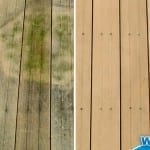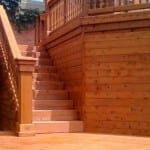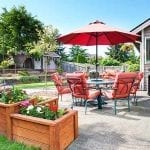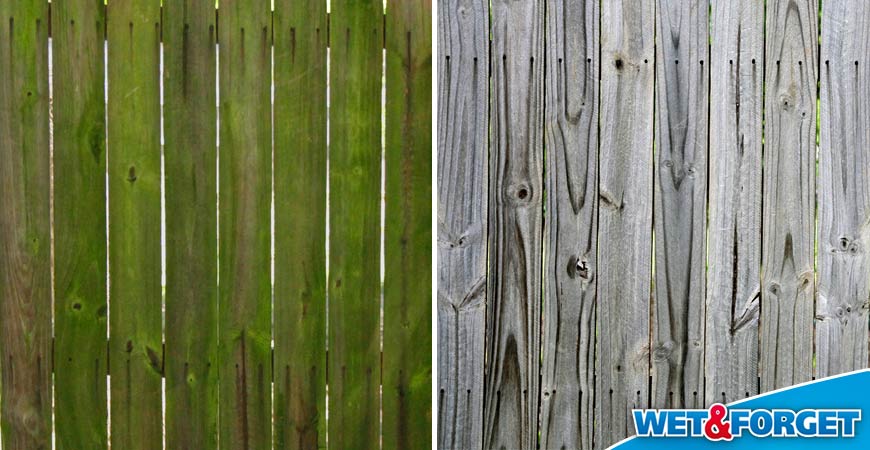
Which Decking is Right for You? Choose for Years of Outdoor Bliss
Are you thinking of building a deck this year? You’re in good company: the Freedonia Group, experts in business trends, report that the demand for home decks is on the rise and should increase by 1.3 percent each year through 2023.
There are many types of wood to choose from, as well as alternate materials such as composite decking or aluminum.
Choose the right material for your family’s needs, and you can expect many years of barbecuing and sipping lemonade on your deck with family and friends. Choose wrong, though, and you could wind up paying way too much or spending more quality time with your hammer and saws than with your grilling tongs.
Types of Decking:
This essential guide to deck types will help you choose the right deck for your family’s needs, your budget, and where you live, so you can enjoy many fun-filled years with your deck.
Wood
Wood is the most popular type of decking in the US. It has that natural, classic deck look, smells nice, and soft woods are among the least expensive decking materials.
Wood decks require the most maintenance, though. To keep your wood deck from splitting, warping, or rotting, you will need to re-finish it regularly (how often depends on wear-and-tear, climate, and type of wood). Hardwoods like teak or ipé, while gorgeous and durable, can be very costly.
Bob Vila recommends that you factor in where you live when considering the type of wood to buy. For example, while decay-resistant redwood is plentiful and popular in the Pacific Northwest, it could cost you an arm and a leg to have it shipped to another part of the country.
Pressure-treated wood makes it possible to use inexpensive, less durable woods such as Southern pine for building decks. It tends to warp and bend more easily than hardwood, though; the chemicals the manufacturer treats the wood with can affect its color.
The chemicals used in pressure-treated wood are also poisonous. This makes it a wrong choice if the family dog likes to gnaw on things.
No matter which wood you choose, decking expert Lisa Hallett Taylor recommends buying wood that has been certified by the Forest Stewardship Council. This non-profit agency certifies that a company harvests wood responsibly to preserve our forests.
Composite
Composite decking has been growing in popularity in recent years. It is usually made of wood and plastic, which manufacturers heat and shape into boards.
There are two main types of composite decking: hollow composite and solid composite.
Hollow composite is lighter and does not expand and contract as much when the temperature changes. Solid composite is heavier, stronger, and looks more like wood than hollow composite but will expand and contract more.
Composite decking doesn’t require resealing like wood; it won’t give you splinters, and it tends to be more environmentally friendly because manufacturers can use recycled materials to make it. Composite decking also tends to be more stain-resistant than wood.
As long as it has been treated with fungicide during manufacturing, composite decking resists rotting much better than wood.
The downside is that some types of composite decking can be slippery and sag more than wood with time. Plus, it doesn’t always have that “real wood” look many homeowners prefer.
Plastic
Recycled polyethylene (HDPE) plastic is an environmentally-friendly option that helps keep used plastic products out of landfills. It doesn’t need to be stained and is lightweight and weather resistant.
The look can vary quite a bit depending on the brand, though. Plastic decks also require more substructure than other decks because the plastic needs more support to keep from bending.
Aluminum
Aluminum is an excellent decking material. It is durable, stays cool in the sun, and is resistant to fire and termites.
It doesn’t need to be stained; it’s slip-resistant and won’t splinter like wood. Another bonus is its color doesn’t fade like other types of decking. Also, it won’t warp or rot like wood or composite can.
The problem with aluminum decking is that it’s the most expensive type of decking material, so be prepared for your wallet to take a significant hit. Aluminum also lacks the visual charm of natural wood.
Keep Decking Clean with Wet & Forget Outdoor
After some time outdoors, your deck may become stained with mold, mildew, algae, lichen, or moss. No matter which type of decking material you use, Wet & Forget is a safe, easy, and effective way to remove any of these unsightly and potentially deck-damaging stains.
For even more deck maintenance tips, read decking cleaning tips & tricks.
You only need a little time and a garden sprayer to give your deck a good soaking. Spray once, and Wet & Forget will do the work for you.
Wet & Forget will also remove moss, mold, mildew, or algae from your deck furniture to keep it looking new. BSP in Avon, Ohio, told amazon.com:
“We finally ordered Wet & Forget after spending hours scrubbing our deck and patio furniture. The deck, which is made of composite material, faces wetlands under two large oak trees. We had issues with moss growing on our chairs and on the deck. We were very skeptical, but felt we had little choice because nothing else we tried seemed to work. Much to our surprise and delight, the moss was gone within a few days of the application. We will definitely order this product again. Spraying it on the affected surfaces and walking away is not only easier than spending hours scrubbing those surfaces, but also took less than two hours, which saves a lot of time.”
Thanks, BSP!











BILL
i HAVE OUTDOOR CARPETING ON MY STEPS. iT HAS BEEN DOWN ABOUT 19 YRS & IN GGOD SHAPE EXPECT NOW WE HAVE MOLD GROWING ON THE CARPET. CAN I USE WET&FORGET ON THE CARPET?
Teresa Fugatt
Hello! Yes, you can use Wet & Forget on outdoor carpet. Wet & Forget is a gentle product with no bleach and no caustic chemicals therefore it’s safe for any outdoor surface!